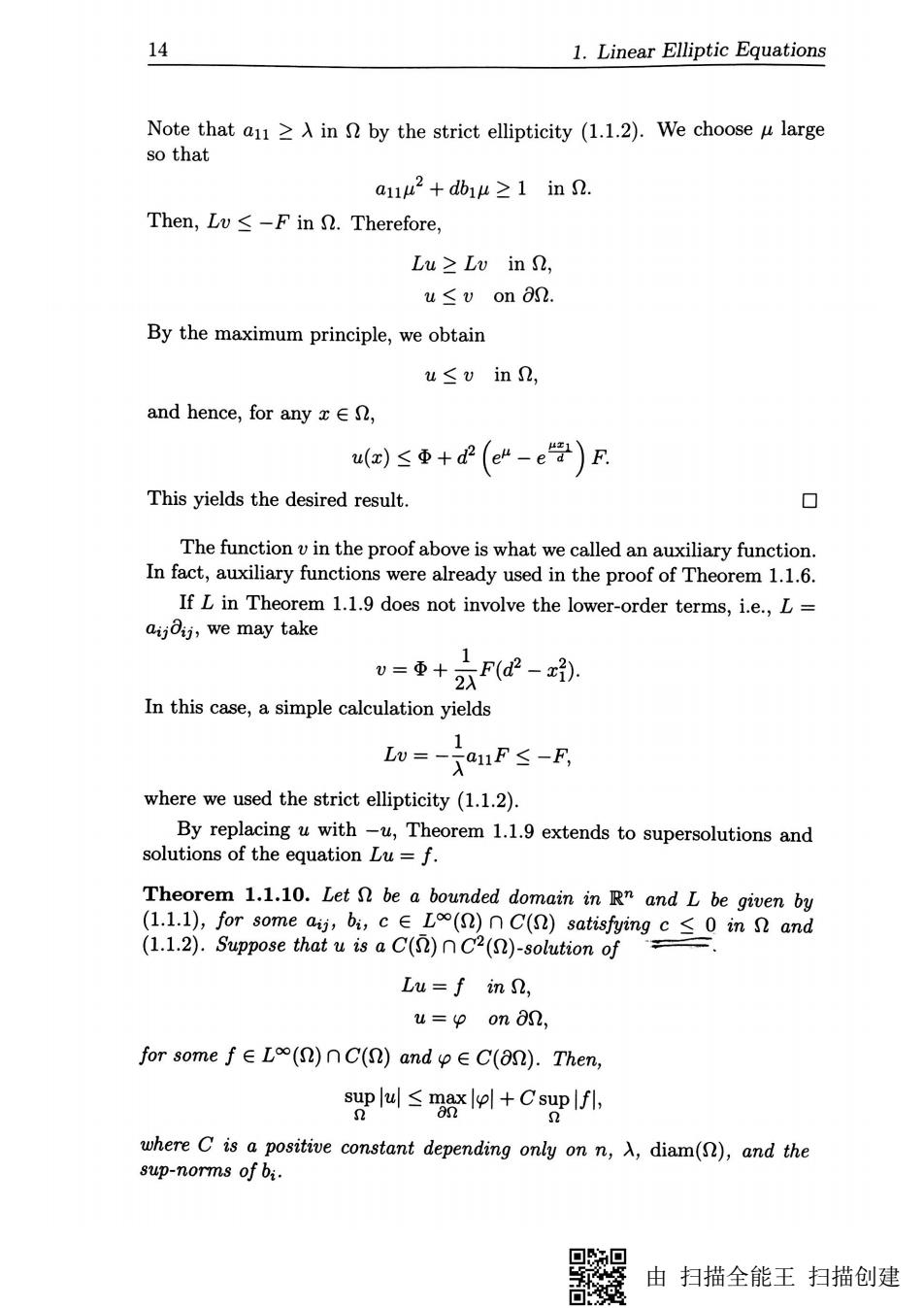正在加载图片...

14 1.Linear Elliptic Equations Note that a1l≥入in2 by the strict ellipticity(1.l.2).We chooseμlarge so that a1142+db14≥1in2. Then,Lv <-F in Therefore, Lu≥Lv in S, u≤vona2 By the maximum principle,we obtain u≤vin2, and hence,for any x∈n, u()≤电+d(e-e学)r This yields the desired result. ◇ The the proof above is what we called an auxiliary function In fact,auxiliary functions were already used in the proof of Theorem 1.1.6. If L in Theorem 1.1.9 does not involve the lower-order terms,i.e.,L= aijoij,we may take =+2F2- In this case,a simple calculation yields Lw=-a1F≤-R where we used the strict ellipticity(1.1.2). By replacing u with-u,Theorem 1.1.9 extends to supersolutions and solutions of the equation Lu=f. Theorem 1.1.10.Let be a bounded domain in Rn and L be given by (1),for some)satising i and (1.1.2).Suppose that u is a C()2()-solution of Lu=f in, u=y on 8n, for some f∈L()nC()andp∈C(an).Then, sP叫≤2xlol+CsupIfl, where C is a positive constant depending only on n,A,diam(),and the sup-norms of bi. 由扫描全能王扫描创建由 扫描全能王 扫描创建